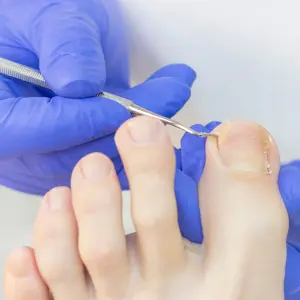Understanding Ingrown Toenails and Their Causes
An ingrown toenail develops when the nail grows incorrectly, penetrating the skin at the sides of the toe. Several factors contribute to this condition, including improper nail trimming, tight-fitting shoes, genetic predisposition, and trauma to the toe. While mild cases can often be managed at home with warm soaks and proper trimming, chronic and severe ingrown toenails may require professional intervention. Left untreated, the condition can lead to infections, swelling, and even difficulty walking.
When to Consider Permanent Ingrown Toenail Surgery
Many individuals attempt home remedies or non-surgical treatments before seeking surgical intervention. However, if an ingrown toenail becomes a recurring problem despite conservative treatments, Permanent Ingrown Toenail Surgery is often the best course of action. Some signs that indicate the need for surgical intervention include chronic pain, recurring infections, and the presence of pus or excessive swelling.
A podiatrist will assess the severity of the ingrown toenail and determine whether surgery is necessary. If infections occur frequently or if the toenail continues to grow improperly despite trimming and care, surgical treatment becomes a practical choice to prevent further complications.
The Role of a Podiatrist in Ingrown Toenail Treatment
A professional approach is essential when dealing with severe or persistent ingrown toenails. Seeking treatment from a podiatrist in Fort Lauderdale ensures that the condition is managed safely and effectively. A podiatrist specializes in diagnosing and treating foot and toe-related issues, making them the best choice for individuals dealing with chronic ingrown toenails.
During an initial consultation, a podiatrist will evaluate the severity of the condition and discuss possible treatment options. If conservative treatments are ineffective, they will recommend a surgical procedure to provide permanent relief. Patients benefit from expert care, advanced surgical techniques, and proper aftercare to ensure complete healing.
What to Expect During Permanent Ingrown Toenail Surgery
Permanent Ingrown Toenail Surgery is a relatively simple procedure performed under local anesthesia. The most common method used is partial nail avulsion with phenolization, where the problematic portion of the nail is removed, and the nail matrix is treated with a chemical to prevent regrowth. In some cases, the entire toenail may need removal if the problem is severe or affects the whole nail.
The procedure typically takes less than an hour, and most patients can return home immediately after. Since the surgery is performed under local anesthesia, patients experience minimal discomfort during the procedure. Following the surgery, the podiatrist provides aftercare instructions, including wound care and activity restrictions, to ensure proper healing.
Recovery and Aftercare Following Surgery
After undergoing Permanent Ingrown Toenail Surgery, proper aftercare is essential for a smooth recovery. Patients may experience mild discomfort, swelling, or redness in the treated area for a few days, but these symptoms generally subside quickly. Keeping the toe clean, changing dressings regularly, and avoiding excessive pressure on the foot help promote healing.
A podiatrist will schedule follow-up visits to monitor the healing process and address any concerns. Most individuals can resume normal activities within a week, although strenuous activities and tight-fitting shoes should be avoided until full recovery is achieved. In most cases, the success rate of the surgery is high, and the chances of recurrence are minimal.
Benefits of Permanent Ingrown Toenail Surgery
Opting for surgical treatment offers numerous advantages for individuals struggling with chronic ingrown toenails. One of the key benefits is long-term relief, as the procedure effectively prevents the nail from growing abnormally again. Additionally, the surgery eliminates the risk of recurring infections, reducing the need for antibiotics or frequent medical visits.
Another benefit is the relatively quick recovery time, allowing individuals to return to their daily routines without prolonged downtime. The procedure is also minimally invasive and performed with precision, ensuring that discomfort is minimized and healing is smooth. Patients who have undergone Permanent Ingrown Toenail Surgery often report significant improvement in comfort and mobility.
Finding the Right Podiatrist in Fort Lauderdale
Selecting an experienced podiatrist in Fort Lauderdale is crucial for achieving the best results from the procedure. A qualified podiatrist will ensure that the surgery is performed with expertise, minimizing risks and optimizing outcomes. When looking for a podiatrist, it is essential to choose a specialist with a track record of successful ingrown toenail treatments and positive patient reviews.
A skilled podiatrist will provide comprehensive pre-operative and post-operative care, ensuring that patients receive the best possible treatment. Consulting with a trusted specialist can help individuals make informed decisions about their foot health and receive the highest level of care.





Comments